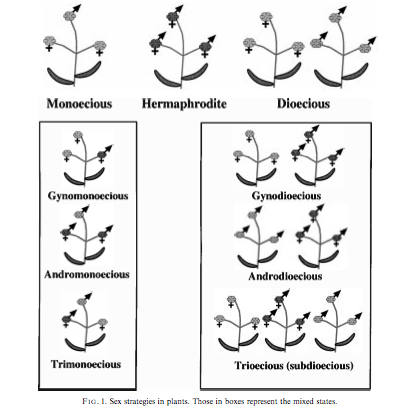Good point Darwin, the problem with info here on the forums is people have to be anonymous so it's very hard to know who to listen to.
I have ruined a lot of plants through following bogus advice over the years so now I'm very sceptical. This thread is a great example of knowing who to listen to being very problematic.
The other problem I have is knowing what questions to ask to find the answers I need. For example, I doubt googling 'sexual expression in cannabis sativa' will find me a simple, easy to understand answer!
yeah that's it mate, often if they have huge respect, i will take their advice with much less hesitation than if they don't, obviously they earned the respect by not spewing bullshit so it says something, but at the end of the day i try and double check things via google or other sources too to be sure, also it just helps reinforce my understanding if i look it up and read about it a few times initially. what has really shocked me about this forum is the accessibility to those guys at the top, breeders like tom hill, shantibaba, esben, have really helped me as of late whenever i've had questions and for that i'm really grateful, and hope they don't mind my badgering haha.
umm if you go to the breeders section on this page, and look at the sticky threads, there're some great ones that have a shit load of info about cannabis sex expression. only issue is pretty much all research has been done on hemp. though they're such closely related species i'd say it'd be exactly the same biology between the two species. i'll link you to the pages... but a lot of the links to journal articles don't work because you need to be a member of the journal to download them. being at uni i just go through their site and they let me download all the papers for free, so if you want any specific ones you can't get your hands on feel free to ask me and i'll email you them. goes for anyone else on here too, if you need anything just ask friends!
scientific reference bibliography
1.breeding/selection
- Marijuana Botany by R.C. Clarke - http://www.mellowgold.com/grow/mjbotany-removed/
- Factors influencing yeild and quality- http://www.internationalhempassociat.../jiha5107.html
2.pollen/pollenation
3.sex
- Sex linked SSR markers- https://www.icmag.com/ic/showthread.p...422#post853422
- Novel male(specific markers)- https://www.icmag.com/ic/showthread.p...468#post853468
- Molecular biology of dioecious plants- http://aob.oxfordjournals.org/cgi/reprint/86/2/211
- RAPD markers encoding retrotransposable elements are linked to males- https://www.icmag.com/ic/showthread.p...839#post860839
4.Indica
5.Sativa
6.hybrids/crosses
7.cannabinoids
- Quantitive analysis of Cannabinoids- https://www.icmag.com/ic/showthread.p...725#post853752
- DNA polymorphisms in THC- https://www.icmag.com/ic/showthread.p...722#post853722
- Chemotaxonomic analysis of Cannabinoids- http://www.amjbot.org/cgi/content/full/91/6/966
- Inheritence of chemical phenotype- http://www.genetics.org/cgi/reprint/163/1/335
8.selfing/feminizing
9.micropropagation/tissue culture
Plant growth regulator on callus induction- http://www.ib.uj.edu.pl/abc/pdf/47_2/145-151.pdf
Book Reviews: http://www.internationalhempassociat.../jiha6213.html
(thread written up by JLP)
i found about another 30 papers last night too while researching. just gonna have to chug through and read them all now in my spare time haha damn exams! anyway hope that helps guys.
ps sorry for the off topic post.
darwin





